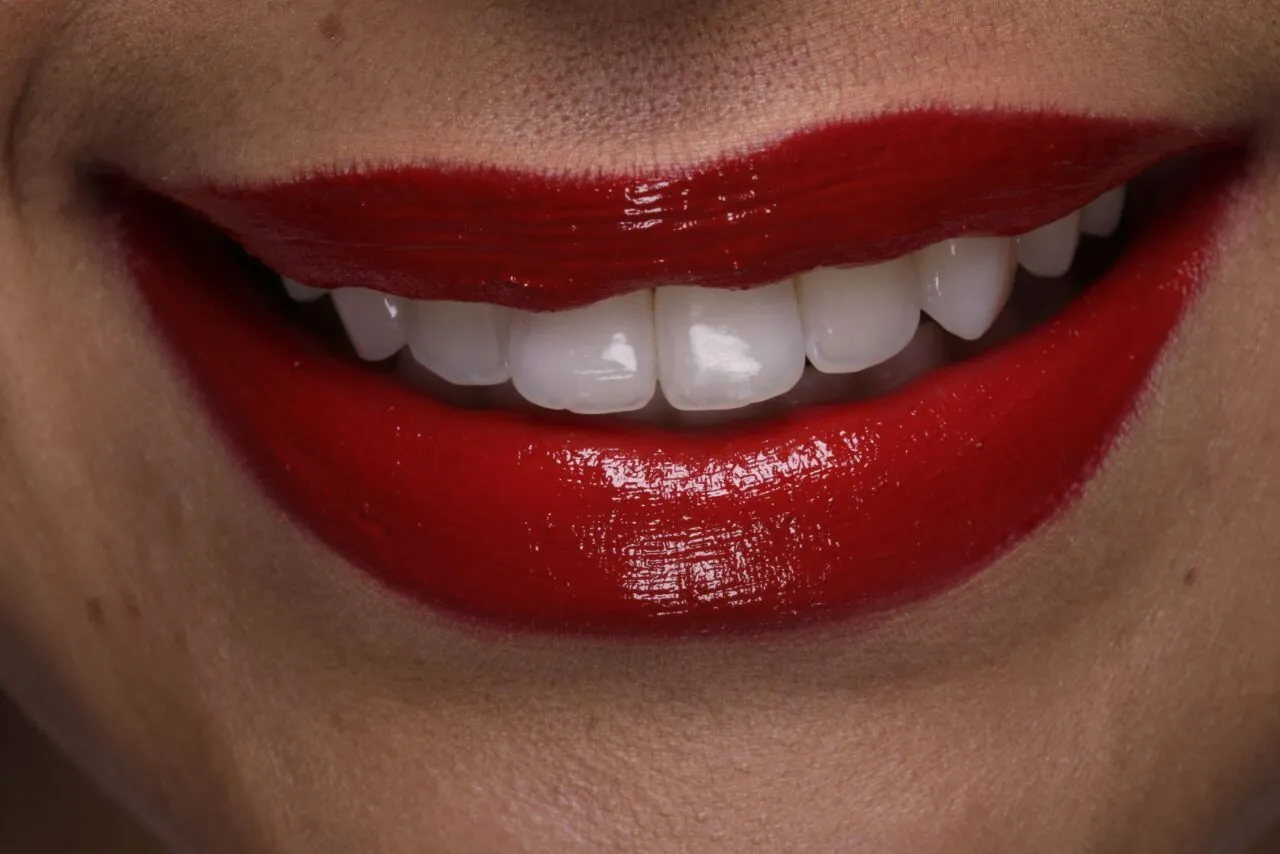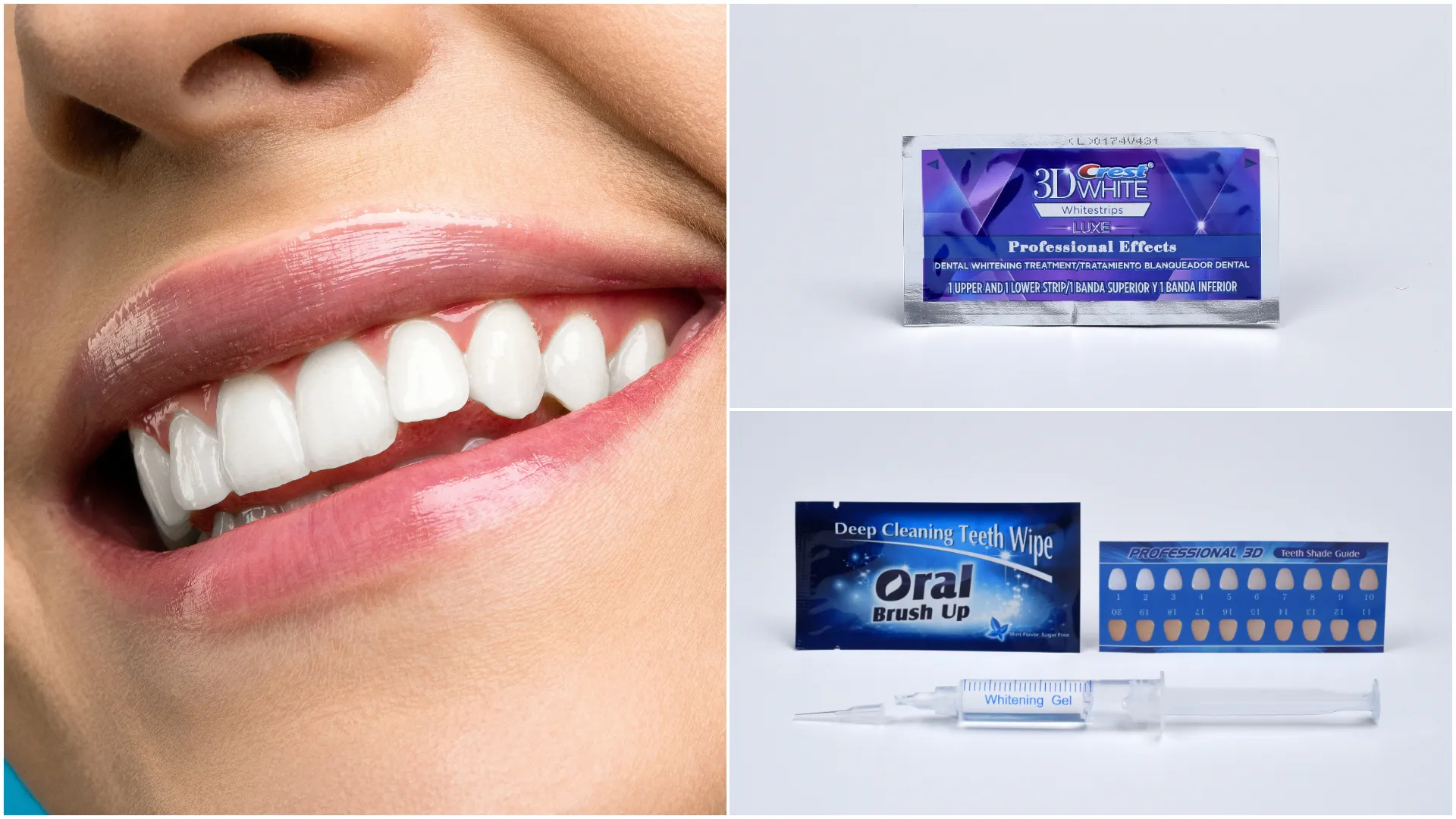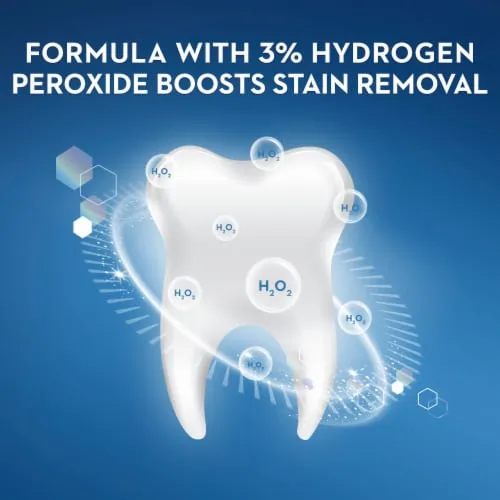Understanding Hydrogen Peroxide and Teeth Whitening
Achieving a brighter, whiter smile is a goal many people aspire to. The market is flooded with products promising dazzling results, but often at a hefty price tag. One of the most accessible and cost-effective methods involves using hydrogen peroxide for teeth whitening at home. This readily available chemical has been a staple in dental care for its antiseptic and whitening properties. However, understanding the science behind it, the safety considerations, and the proper methods is crucial to achieving the desired outcome without causing harm to your oral health. This guide delves into the secrets of using hydrogen peroxide for teeth whitening, providing you with the knowledge and techniques to safely and effectively brighten your smile from the comfort of your own home.
What is Hydrogen Peroxide?
Hydrogen peroxide (H2O2) is a chemical compound composed of hydrogen and oxygen. It’s a mild antiseptic and oxidizing agent, meaning it can break down into water and oxygen. This process releases oxygen, which helps to lift stains from teeth. Hydrogen peroxide is widely available in different concentrations, ranging from the low percentages found in household solutions to higher concentrations used in professional dental treatments. The effectiveness of hydrogen peroxide in teeth whitening lies in its ability to penetrate the enamel and dentin, the layers of the tooth, and break down the stain-causing molecules. This process is known as oxidation, and it effectively lightens the appearance of the teeth.
How Does Hydrogen Peroxide Whiten Teeth?

The whitening action of hydrogen peroxide stems from its ability to release oxygen molecules. When hydrogen peroxide comes into contact with the stained tooth enamel, the oxygen molecules react with the stain particles, breaking them down and making them less visible. This process effectively removes both extrinsic stains, which are surface stains from things like coffee, tea, and tobacco, and also helps to lighten intrinsic stains, which are stains within the tooth structure itself. The concentration of hydrogen peroxide, the duration of its contact with the teeth, and the frequency of use all influence the effectiveness of the whitening process. It’s important to note that the results can vary depending on the type and severity of the stains, as well as the individual’s natural tooth color.
Hydrogen Peroxide Concentration and Safety
The concentration of hydrogen peroxide is a critical factor when considering at-home teeth whitening. Over-the-counter products typically contain lower concentrations, usually between 3% and 10%. These are generally considered safe for at-home use when used as directed. Higher concentrations, such as those used in professional dental settings, can range from 15% to 40% and are administered under the supervision of a dentist. Using a concentration that’s too high or using any concentration incorrectly can lead to adverse effects like tooth sensitivity, gum irritation, and, in rare cases, even damage to the enamel. It’s always wise to start with a lower concentration and monitor your teeth’s reaction before considering a higher one. Always carefully read and follow the instructions on any product label.
Preparing Your Teeth for Hydrogen Peroxide Whitening
Before embarking on any at-home teeth whitening regimen, preparing your teeth is an important step. This preparation ensures the process is as effective and safe as possible. It involves a few key considerations, including consulting with a dental professional, assessing your oral health, and choosing the right hydrogen peroxide product. Taking these steps will help to minimize potential risks and maximize the chances of achieving a brighter, healthier smile. Remember that consistency and proper care are paramount to the success of any teeth whitening method.
Consulting Your Dentist First

It’s always a good idea to consult with your dentist before starting any teeth whitening treatment, especially if you have existing dental work, such as fillings or crowns. Your dentist can assess your overall oral health, identify any underlying issues, and advise you on the suitability of hydrogen peroxide whitening for your specific situation. They can also provide professional guidance on the appropriate concentration and methods for achieving the best results while minimizing risks. A professional consultation can help prevent complications and ensure that your teeth whitening efforts are both safe and effective. Your dentist may also recommend a professional cleaning to remove any surface stains before you begin whitening at home.
Assessing Your Oral Health
A thorough assessment of your oral health is crucial before beginning any teeth whitening treatment. Make sure you do not have any untreated dental issues, like cavities, gum disease, or tooth sensitivity. These conditions can be exacerbated by hydrogen peroxide and may lead to further complications. It is important to address any existing problems before attempting to whiten your teeth. Your dentist will be able to evaluate your overall oral health and help you decide if your teeth are prepared for the whitening process. This evaluation can include checking for any signs of decay, gum inflammation, or other conditions that could be affected by the hydrogen peroxide.
Choosing the Right Hydrogen Peroxide
When choosing hydrogen peroxide for at-home teeth whitening, select a product that is specifically designed for dental use. Look for products that contain a concentration of 3% to 10% hydrogen peroxide, as these are generally considered safe for at-home use. Avoid using industrial-grade hydrogen peroxide, as it can contain harmful additives and higher concentrations that could damage your teeth and gums. Always read the product label carefully and follow the instructions provided. If you’re unsure which product to choose, consult with your dentist or a dental professional for recommendations. Remember that the effectiveness of the whitening process depends on the concentration, duration of use, and the specific method you employ.
The Secret Methods Hydrogen Peroxide Teeth Whitening at Home

There are several methods to whiten your teeth at home using hydrogen peroxide, each with its own set of instructions and potential outcomes. These methods range from simple rinses to more involved paste applications. It is vital to follow the instructions precisely and to monitor your teeth and gums for any adverse reactions. These methods are generally safe when performed correctly and can be a cost-effective way to brighten your smile. Always remember to prioritize your oral health and cease the process if you experience any unusual side effects, such as increased tooth sensitivity or gum irritation.
Method 1 DIY Hydrogen Peroxide Rinse
A simple hydrogen peroxide rinse is one of the easiest methods for at-home teeth whitening. This method involves diluting hydrogen peroxide with water and rinsing your mouth with the solution. This helps to remove surface stains and freshen your breath. The rinse is a gentler approach compared to other methods. However, it may take longer to achieve visible results. It is essential to follow the recommended instructions to ensure the safety and effectiveness of this method.
Step-by-Step Guide
- Mix equal parts of 3% hydrogen peroxide with water in a small cup.
- Swish the mixture in your mouth for about 30-60 seconds, making sure to reach all areas.
- Spit out the mixture and rinse your mouth thoroughly with water.
- Do not swallow the hydrogen peroxide solution.
- Repeat this process once or twice daily, but do not exceed the recommended frequency.
Method 2 Hydrogen Peroxide and Baking Soda Paste

Combining hydrogen peroxide with baking soda can create a more abrasive paste that helps remove stains and whiten teeth. Baking soda is a mild abrasive that helps scrub away surface stains, while hydrogen peroxide provides the whitening action. This method is more potent than a simple rinse, but should be used cautiously to avoid over-abrasion. It’s important to monitor the frequency of use and listen to your teeth’s response. This paste should be used sparingly to prevent potential damage to the enamel. Consistent use is not recommended.
Step-by-Step Guide
- Mix baking soda with hydrogen peroxide to form a thick paste.
- Apply the paste to your toothbrush and gently brush your teeth for about two minutes.
- Rinse your mouth thoroughly with water.
- Use this method no more than once or twice a week to avoid damaging your enamel.
- Avoid using this method if you have sensitive teeth.
Method 3 Hydrogen Peroxide with Toothpaste
This method incorporates hydrogen peroxide into your regular brushing routine by adding a small amount to your toothpaste. This approach combines the cleaning power of toothpaste with the whitening benefits of hydrogen peroxide. It is generally considered a gentle approach that can be incorporated into your regular dental care routine. The concentration of hydrogen peroxide in this method is usually lower, making it safer for daily use compared to methods like the baking soda paste. This is a good option for a gradual approach to teeth whitening at home.
Step-by-Step Guide

- Apply your regular toothpaste to your toothbrush.
- Add a few drops of 3% hydrogen peroxide to the toothpaste on your brush.
- Brush your teeth gently for about two minutes, ensuring all surfaces are covered.
- Rinse your mouth thoroughly with water.
- Use this method once or twice daily, as part of your regular brushing routine.
Important Considerations and Tips
While using hydrogen peroxide for teeth whitening at home can be effective, there are several important factors to keep in mind to ensure your safety and the success of your efforts. These considerations range from the frequency of use to potential side effects and how to manage them. It’s crucial to be aware of these tips to avoid any negative outcomes. These include knowing the right frequency of application, recognizing potential side effects, and knowing how to address them. Making sure you are informed will help to make the process a positive one.
Frequency of Use
The frequency with which you use hydrogen peroxide for teeth whitening is a significant factor. Overuse can lead to increased tooth sensitivity, gum irritation, and enamel erosion. Always adhere to the recommended usage guidelines for the specific method you choose. For example, a hydrogen peroxide rinse might be used once or twice a day, while the baking soda paste should be used no more than a couple of times a week. If you are using hydrogen peroxide with toothpaste, you can incorporate it into your regular brushing routine, but again, pay attention to your teeth’s response. It’s essential to monitor your teeth for any signs of sensitivity or irritation and adjust your frequency accordingly.
Potential Side Effects

While hydrogen peroxide is generally safe for teeth whitening, it can cause some side effects. The most common side effects include increased tooth sensitivity, which can manifest as a sharp pain when consuming hot or cold foods and drinks, and gum irritation. In rare cases, prolonged or excessive use can lead to enamel erosion. If you experience any of these side effects, it is crucial to stop using hydrogen peroxide immediately and consult your dentist. Always be attentive to any changes or discomfort in your teeth or gums.
How to Manage Sensitivity
If you experience tooth sensitivity while using hydrogen peroxide, there are several steps you can take to manage it. First, reduce the frequency of your whitening treatments. Use a toothpaste designed for sensitive teeth, which contains ingredients like potassium nitrate to help block the transmission of pain signals to the nerves. You can also try using a fluoride mouthwash to help remineralize your enamel and reduce sensitivity. It is important to avoid foods and drinks that trigger sensitivity, such as very hot or cold items, and acidic foods. If the sensitivity persists or worsens, consult your dentist.
Alternatives and Complementary Methods
Besides using hydrogen peroxide, there are several alternative and complementary methods for teeth whitening. These include using whitening toothpastes, practicing oil pulling, and seeking professional teeth whitening treatments. Incorporating these methods into your dental care routine can enhance the effectiveness of your whitening efforts and support your overall oral health. The combination of different methods might yield the best results, but it is always necessary to practice these methods in a safe manner, and listen to your dentist.
Whitening Toothpastes
Whitening toothpastes are a convenient way to remove surface stains and brighten your teeth. These toothpastes typically contain mild abrasives or chemical agents, such as hydrogen peroxide or baking soda, to polish the enamel and remove stains. While whitening toothpastes can improve the appearance of your teeth, they are generally less effective than professional whitening treatments or at-home methods like hydrogen peroxide. Look for toothpastes that are ADA-approved, indicating they have been tested for safety and effectiveness. Use whitening toothpastes regularly as part of your oral care routine to maintain a brighter smile.
Oil Pulling
Oil pulling is an ancient Ayurvedic practice that involves swishing oil in your mouth for a period of time to remove bacteria and toxins. While research on its teeth whitening benefits is limited, some proponents claim that oil pulling can help remove surface stains and promote healthier gums. Commonly used oils for oil pulling include coconut oil, sesame oil, and sunflower oil. Swish one to two tablespoons of oil in your mouth for 15-20 minutes, then spit it out and rinse your mouth with water. This method is considered safe and can be incorporated into your oral care routine. Although the whitening effects are not as prominent as other methods, oil pulling can still contribute to overall oral hygiene.
Professional Teeth Whitening
For those seeking more dramatic and lasting results, professional teeth whitening is an option. This involves treatments performed by a dentist, who uses higher concentrations of hydrogen peroxide or other whitening agents. Professional treatments can provide significantly faster and more effective results compared to at-home methods. The dentist can also address any underlying dental issues and customize the treatment to your specific needs. Professional teeth whitening can range from in-office treatments to take-home kits that are prescribed by your dentist. Consider professional teeth whitening if you’re looking for the most effective way to achieve a brighter smile.
Conclusion The Secret to a Brighter Smile
Using hydrogen peroxide for teeth whitening at home is a viable option for achieving a brighter smile. Understanding the process, proper methods, and safety considerations is essential to maximizing effectiveness and minimizing risks. It’s crucial to consult your dentist before beginning any whitening treatment to ensure it’s appropriate for your oral health. By following the guidelines provided in this guide and being aware of the alternatives, you can confidently embark on your journey to a more radiant smile. Remember, consistency, proper care, and a healthy oral hygiene routine are the keys to long-lasting results and a confident smile. Prioritize your oral health, and enjoy the journey to a brighter, whiter smile.
